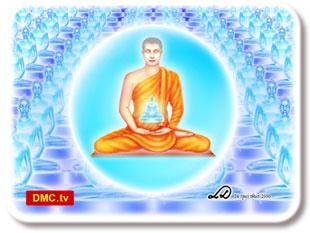View this page in: ไทย
CASE STUDY
Mysterious Stone
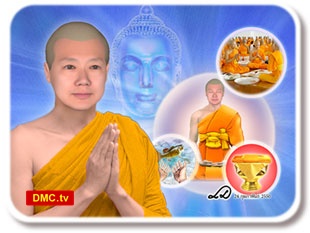
With great respect to Luang Phaw:
Khon Kaen, the city of yellow cassia and the sound of the kaen pipes, my place of birth. It is a place of many stories – mysterious, scary, exciting, and sad – whose origins I do not know. So my questions are still seeking answers. So I have written my whole story to request answers from Luang Phaw.
I ordained as a monk at the Phra Dhammakaya Temple in April 1987. I met Khun Yai at that time and she said to me: “You are a good man because you have the good fortune to ordain.” These words gave me strength and made me want to be free of my defilements. I did not think about disrobing. After my monastic training period, there was not a program for me to continue as a monk so I requested to go on a tudong.
The first location where I chose to stay and meditate was the Buddhist Monastery of Tham Seua Dao cave in Chiang Dao District, Chiang Mai Province. This was for so I could meet a meditation master in the cave. The only other thing around the Monastery at Tham Seua Dao cave was the cemetery. I was made very welcome there. The trees served as my roof. The grass served as my bed for a restful night’s sleep.
I kept an amulet of Luang Pu with on my person and wished with Luang Pu: “May I have rice and water for my meal.” I wished that I could walk on tudong for 15 days then arrive at the Tham Seua Dao cave Monastery. During my journey, I met a meditator dressed like a Chinese priest with long hair, a yellow complexion, and a bright appearance. I asked him what he did each day. He responded: “I walk, stand, sit, and sleep. This is all I do. I meditate with the 4 foundations of mindfulness: the body, the sensations, the mind, and the Dhamma. I practice not becoming attached to anything. I release everything. This is my method.”
The first location where I chose to stay and meditate was the Buddhist Monastery of Tham Seua Dao cave in Chiang Dao District, Chiang Mai Province. This was for so I could meet a meditation master in the cave. The only other thing around the Monastery at Tham Seua Dao cave was the cemetery. I was made very welcome there. The trees served as my roof. The grass served as my bed for a restful night’s sleep.
I kept an amulet of Luang Pu with on my person and wished with Luang Pu: “May I have rice and water for my meal.” I wished that I could walk on tudong for 15 days then arrive at the Tham Seua Dao cave Monastery. During my journey, I met a meditator dressed like a Chinese priest with long hair, a yellow complexion, and a bright appearance. I asked him what he did each day. He responded: “I walk, stand, sit, and sleep. This is all I do. I meditate with the 4 foundations of mindfulness: the body, the sensations, the mind, and the Dhamma. I practice not becoming attached to anything. I release everything. This is my method.”
After this, I continued my tudong to Chiang Mai Province and Chiang Rai Province. Then I meditated in a large cave at Ban Phot Mountain Temple in Loei Province. I ate little, practiced meditation frequently, did not speak, did not lie down, and did not leave the cave for an entire month. I saw my inner Buddha. I could change its color and make it expand or contract as I wished. I experienced a beautiful brightness that made me tranquil from my head to my feet. I rested my mind at the center of my body and felt happiness and contentment throughout the day.
I meditated a lot. I and my monk companion started to use supranormal powers. I made the brightness emerge from my abdomen like a mist or a haze. I could see it with my naked eye. It was like being enveloped in a dazzling light. If my mind was at the center of my body and still, the light would be especially bright. Sometimes we would compete about who had the brightest light.
When we met in the cave, we would greet each other by saying “Is the brightness radiating from you?” This referred to the brightness from the stomach, not the face. This was an amazing and wondrous situation. I stayed there for 3 months, then continued my tudong, traveling to my hometown in Khon Kaen Province. On 18 June 1987, I set up my tudong umbrella at the cemetery on the edge of the village.
When we met in the cave, we would greet each other by saying “Is the brightness radiating from you?” This referred to the brightness from the stomach, not the face. This was an amazing and wondrous situation. I stayed there for 3 months, then continued my tudong, traveling to my hometown in Khon Kaen Province. On 18 June 1987, I set up my tudong umbrella at the cemetery on the edge of the village.
The cemetery had almost 100 rai of land (40 acres) interspersed with small and large trees. The cemetery was surrounded by fields. All this gave it a charming, quiet, and soothing atmosphere. I fell in love with this environment and pursued meditation on death. I slept in a coffin which had another kind of charm and color. And I trained to bring my mind to stillness.
Some nights I dreamt that a dark shadow lifted me out of the coffin and tossed me around. I felt light and relaxed, like a person sleeping in a hammock being rocked by someone. I stayed there for many days. The villagers built a hut for me. I had the idea of making the cemetery into a well-established temple.
Some nights I dreamt that a dark shadow lifted me out of the coffin and tossed me around. I felt light and relaxed, like a person sleeping in a hammock being rocked by someone. I stayed there for many days. The villagers built a hut for me. I had the idea of making the cemetery into a well-established temple.
Not far from my temple was another temple called Da Pha Kao Temple. This temple was once the location of sacrifices made to Brahmin deities. The villagers told me about the history of this temple. They said there was once a strange urn there. When it rained and there was flooding, this urn would roll to play in the water at the Gut Geung stream which was 3 kilometers away.
After playing in the water, it would roll back to the temple on its own. Now this urn is kept at the Korat Museum. The land around the temple is strange because if a person digs even a small pond there, water will continually flow into the pond. It is possible to use this water for drinking throughout the year, even if the pond is shallow.
After playing in the water, it would roll back to the temple on its own. Now this urn is kept at the Korat Museum. The land around the temple is strange because if a person digs even a small pond there, water will continually flow into the pond. It is possible to use this water for drinking throughout the year, even if the pond is shallow.
During the dry season, the villagers use this water at all times without it ever running out. The villagers call it the “endless water pond.” Moreover, there are many laterite rocks stacked around the area. When I visited Da Pha Kao Temple, my gaze was drawn to one black stone. It was shaped like the boundary marker stone of a Buddhist temple. I requested to take it with me. I brought it to my temple and placed it inside the Buddha image located at the wooden hall.
After this, many unusual events occurred. The weather became very hot and dry. Lightning struck on all 4 sides of the temple many times. When I meditated, I often had a vision of a large Yaksa, as tall as a sugar palm tree with curly hair, carrying a large stick.
In the end, I had a vision while I was sitting under a tree. The Yaksa appeared, raised his stick high in the air, and brought it down to strike me very hard on my back. I escaped from the Yaksa by flying into the air. The Yaksa followed me. In my vision, I laughed very hard that the Yaksa could not catch up to me.
In the end, I had a vision while I was sitting under a tree. The Yaksa appeared, raised his stick high in the air, and brought it down to strike me very hard on my back. I escaped from the Yaksa by flying into the air. The Yaksa followed me. In my vision, I laughed very hard that the Yaksa could not catch up to me.
7 days after this incident, a terrible event took place which I will never forget. The villagers had constructed a grass-roofed hall which seated 30 people for meditation practice, including my own mother. There was a great rainstorm with fearsome thunder and lightning. The wooden hall rocked back and forth. The villagers cried in fear and all of them ran to the food hall which was made of cement with a wooden roof and roofing tiles. But construction of the food hall was not finished.
I and the other monks shouted to the villagers, telling them not to go to the food hall, construction was not yet complete. But nobody listened. They thought that the food hall would be stronger. I ran after them and told them to return to the wooden hall. At that moment, a very strong wind blew and destroyed the food hall so that it collapsed on the 30 people inside.
I managed to get out of the food hall just in time. At the same time, lightning and a strong wind blew into the wooden hall, causing the Buddha image to fall over at a 45 degree angle against the bamboo wall behind it. The black stone inside the Buddha image fell out while the wooden hall collapsed. But the grass-thatched roof prevented anyone from losing their lives. Right after this, the storm ended.
Looking back to the food hall, I and the other monks rushed back to help the injured there. Most of the villagers had minor injuries, small head wounds. But I had to view the most horrific sight. One of the posts in the food hall had fallen on a villager, my own mother.
I and the other monks quickly brought out my mother’s body and placed her on a cart. We helped each other pull the cart to the hospital. The sandy road had been muddied by the rains so pulling the cart was difficult. We had to gradually move it forward for 2 kilometers. It felt like hundreds or thousands of kilometers. Throughout the journey, I spoke about Dhamma to my mother so that she would think about merit, not think about demerit. I wanted her to consider death as a normal event.
I and the other monks quickly brought out my mother’s body and placed her on a cart. We helped each other pull the cart to the hospital. The sandy road had been muddied by the rains so pulling the cart was difficult. We had to gradually move it forward for 2 kilometers. It felt like hundreds or thousands of kilometers. Throughout the journey, I spoke about Dhamma to my mother so that she would think about merit, not think about demerit. I wanted her to consider death as a normal event.
My mother was aware of my Dhamma speech to her. Her face was bright and she had a wide smile. She did not show that she was in pain. She had internal bleeding and it was still possible to hear her heartbeat. But her heartbeat grew weaker by the minute. I wished that her heart would continue beating, I hoped that great supranormal power would come to her. But she lived for another 3 days then died peacefully.
I counted this as a great loss of a loved one. The location and orientation of the place where the post from the food hall fell on my mother was exactly the same as the location and orientation of the place where the Yaksa struck me with the stick on my back during my vision. I made peace with the Yaksa by quickly bringing the black stone back to its original spot. I thought that this would ensure that that terrible day would not reoccur. And after returning the stone, there were no such further occurrences.
There was another wondrous event involving one of the other monks. This monk had been the abbot for 15 years of a temple near the village. On 18 August 2006, he dreamt that a tree wanted to grow out of the Gut Geung stream behind the temple. This was the same place as where the magical urn rolled to play in the stream. The water in the stream gave out a bad smell, like pig manure.
6 days later, he had a mechanical digger excavate the stream. He found 3 of the takien trees he had dreamt about next to one another. The largest tree had a trunk 4.90 meters wide and was 5.65 meters long. It was very strange that when a photo was taken of the trees, they looked like they had the shape of people. The smallest tree was shaped like a 19 year-old woman. The largest tree was shaped like an old man.
The villagers called them grandfather, grandmother, and child. In the photos of the roots, the roots resembled faces. Another photo looked like the face of a ghost smoking a cigarette. All 3 trees gave good luck. The villagers who respected the trees rubbed powder along the trees to see what numbers appeared. As a result, people won tens of thousands of baht in the lottery. Those who did not believe in the trees and disparaged them had various misfortunes. One young man impetuously said that it would be good to make the trees into charcoal. After he said this, he had an accident in which his motorcycle flipped and he injured his mouth. I would like to remind everyone that if you do not believe something, do not disparage it.
Questions
1. Why the did Luang Pu amulet enable me to receive food and water as I wished for the entire time I was on tudong while walking to Tham Seua Dao cave Buddhist monastery?
2. The monk who resided at Tham Seua Dao cave Buddhist monastery meditated with the 4 foundations of mindfulness. Will he truly reach the inner Buddha, the Dhammakaya? What idea did this monk have that led him to practice meditation in that cave?
3. Why was it that when my mind reached the center of my body, a bright light would radiate out from my stomach? Why is that people who have reached this meditative state normally do not have such light emerge from their stomachs? When I slept in the coffin, what was the dark shadow that picked me up and tossed me around?
4. The villagers told the story of the urn which rolled to the stream to play, and the story of the ponds which always had water flowing into them. Were these stories true? If so, what caused these things to occur?
5. Was there a Yaksa looking after the objects at the temple from which I took the black stone? If there was a Yaksa, did he come after me to return the stone? Did I violate the second precept against stealing by taking the Yaksa’s beloved object? From what era did that stone come from? What was the stone’s historical importance?
6. Did the Yaksa cause the post at the food hall to fall on my mother? If the Yaksa did this, did the Yaksa accumulate demerit from this action? Was the post that fell on my mother related to the vision I had of the stick that hit my back?
7. What demerit caused my mother to die as she did? If I had not taken the black stone, would I have helped my mother to survive? What was her state of mind at the time of her death? Where is she now?
8. Were the 3 trees that were found in the Gut Geung stream takien trees or not? Was there anything supernatural about these trees? Why did the trees enter into my monk friend’s dream? Who entered into his dream? Was the image in the photo of the trees that showed a grandfather, grandmother, and child real? Why did numbers appear on the trees? Why did people who disparaged the trees have misfortune?
9. My father once ordained for 5 years at the end of his life. He fell ill with hepatobiliary cancer and died. What demerit caused him to die of hepatobiliary cancer? What was his state of mind at the time of his death? Where is he now?
10. Why did I like to go off on my own, like to tudong, like to stay at cemeteries, like to meditate in caves, like to sleep in coffins, and like to build temples on the grounds of cemeteries?
11. Why did I not make merit with the Dhammakaya community? But wherever I wandered, why would I encounter kalayanamitta from Phra Dhammakaya Temple often?
12. In the last Buddhist interval, did I like to go off on my own as I do in my present life? What were the results of my meditation practice? Do I have a strong pattern to ordain to be a monk? What is the reason why some people like to make merit alone and some people like to make merit in a group?
Luang Phaw's Dream
I closed my eyes, dreamed and woke up with these answers.
When you tell anybody the story like a tale, it will make anyone know more about retribution (Law of Kamma)
I closed my eyes, dreamed and woke up with these answers.
When you tell anybody the story like a tale, it will make anyone know more about retribution (Law of Kamma)
1. For the entire time you were on tudong on the way to the Buddhist monastery at Tham Seua Dao, you had sustenance provided to you. This is because you mind was connected to Luang Pu. This made the Dhamma merit of Luang Pu join with your merit from offerings. So the results of this merit arose.
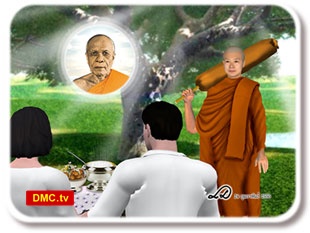
2. The monk at the Tham Seua Dao Buddhist monastery meditated based on the 4 foundations of mindfulness. If he can bring his mind to the seventh base, he will attain the Dhammakaya when his mind is still. But if he does not bring his awareness to the center of his body at the seventh base, and if his mind is not completely still, he will not attain it.
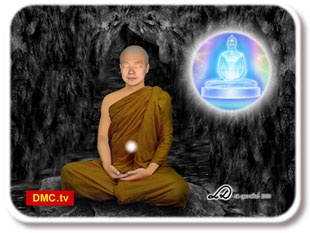
3. When your mind was at rest at the center of your body, you had a bright light radiate out from your stomach. This is because you and your monk friend had very fine mental capacities at the same level. When you wished with your mind and wished with your mental power, your wish would be fulfilled. But you could only see the light when your mental capacities were at the same level. But if your minds were not at a similar level, you could not see the light.
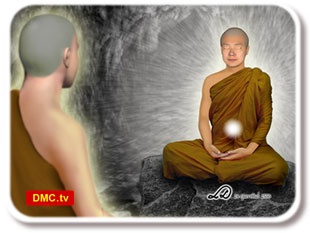
When you slept in the coffin, it was as though a dark shadow lifted you up and tossed you around. This was because there was little air in the coffin so you had this sensation. Actually, nobody lifted you up and tossed you around. Now you should practice sleeping in a coffin and one day you will really get to sleep in one. It is good that you practiced meditation on death. This is appropriate for those who cannot imagine what death is like. Or if someone has a lot of free time and does not know a good activity to pursue, that person can do this to have mindfulness to lead his life prudently.
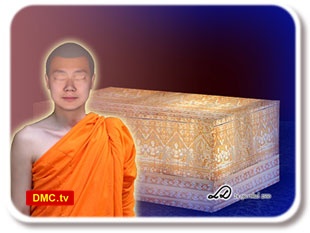
4. The villagers told the story of the urn that rolled to play in the waters of the stream, and the story of the ponds which had water constantly flowing into them. These are only stories and legends. Do not take them as the truth. They do not have any value, they cannot reduce suffering. And they cause delusion as well.
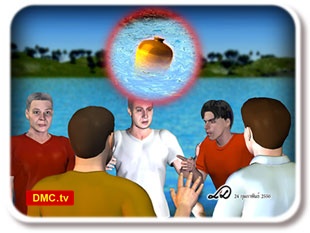
5. The place from which you took the black stone really had a Yaksa guarding over it. Originally, that place was a palace where Brahmin rites of sacrifice were conducted. The Yaksa really came after you to return the stone.
The fact that you took the black stone was not a violation of the second precept. This is because you thought it was a stone naturally in that place and did not know someone was possessive about it.
The black stone originated in the era of Khmer culture which respected Brahmic religion. This culture spread to that area.
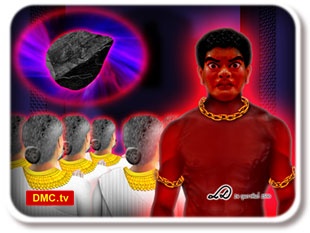
6. The post from the food hall fell on your mother. This occurred as a result of a natural phenomenon which corresponded to your mother’s kamma. And it occurred at the time the Yaksa wanted the stone returned. This situation created a link between this event and what happened with the Yaksa. It was not related to the vision you had of the Yaksa hitting your back with the stick. It was a coincidence.

7. Your mother died in this way because of her past-life demerit when she was in a village which had many snakes. So she struck snakes with a stick until she broke their backs, then struck them until they died. She did this often and the results of the accumulated demerit arose in her most recent life.
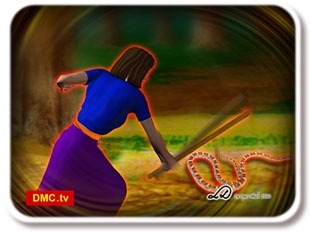
Even if you had not taken the black stone, your mother would have died as a result of this demerit anyway.
When she died, her mental state was bright and clear. When she awoke, she found herself in a golden celestial palace in Tavatimsa, as a result of the merit she made in Buddhism. She is a beautiful angel.
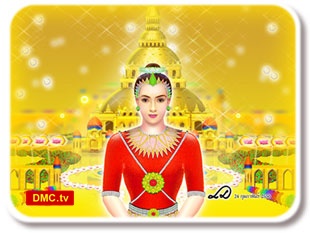
8. The 3 trees in the Gut Geung stream were takien trees which had musician angels residing in them. They wanted to move from the stream to be on land. So they entered your monk friend’s dream because they believed he could help them.
The photos of the trees showed the spirits who were in the takien trees: a father, a mother, and a child. The numbers which appeared on the trees were the delusions of those crazy about the lottery. Some of these people had merit that made them prone to receiving windfalls. So they got the right numbers because some people thought they saw them on the trees, and some thought of the numbers themselves. But not every person got the right numbers every time. Those who won only one time spoke as though they won many times.
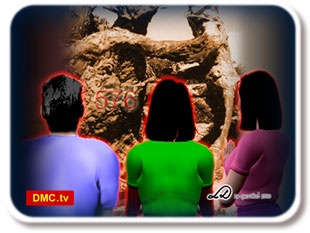
A person disparaged the trees and had an accident in which he injured his mouth. This is a matter of demerit from bad speech which happened to occur at that time. The spirits in the trees did not do anything. You should suggest to your monk friend that the trees be moved to the forest so that they will not cause people to be deluded.
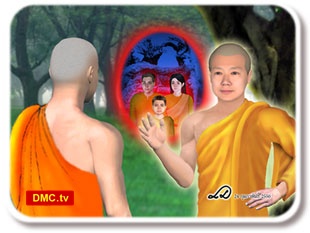
9. Your father ordained as a monk for 5 years. At the end of his life, he became sick with hepatobiliary cancer and died. This because of his past-life demerit from killing animals for food, and his demerit from being a person who kept anger and feelings of revenge in his mind. This made him irritable.
When he died, he became a floating angel with a medium-sized celestial palace, due to the merit he made in Buddhism.

10. You like to go off on your own, to tudong, to stay in cemeteries, to meditate in caves, to sleep in coffins, and to build monasteries in cemeteries. This is a persona that followed you across lives from when you were a monk. You liked to tudong and go off on your own in many past lives. You liked it because it was freedom. It made you feel content.
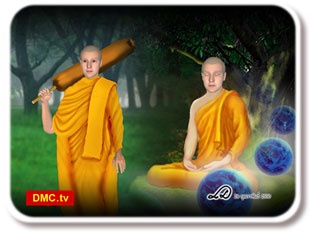
11. You did not make merit with the Dhammakaya community but wherever you went you met kalayanamitta from Phra Dhammakaya Temple. This is because you made merit with the Dhammakaya community in your past so you had a connection in merit with the Dhammakaya community. This made you encounter kalayanamitta from Phra Dhammakaya Temple often. But your persona makes you like to go off your own. You like freedom. So you did not stay with the Dhammakaya community which must work as a team.
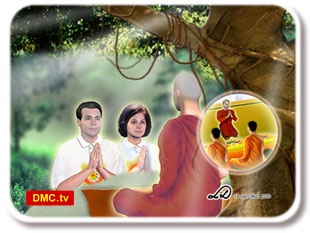
In your meditation, you attained the clear inner Buddha. You retuned to Tusita.
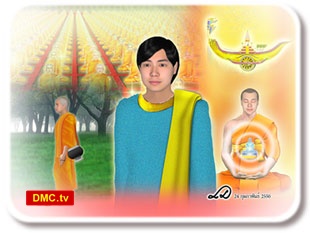
You have a strong pattern to be a monk for the rest of your life. You have a connection in merit with the Dhammakaya community, even if you have not been with the community during your present life. You should diligently practice to be a monk and not miss any opportunity to make merit with the Dhammakaya community. This is so you will have a connection in merit with the community and return to Tusita.
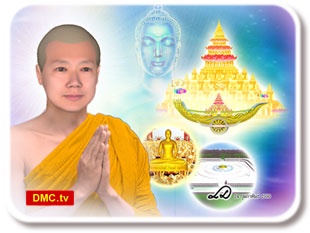
Some people like to make merit on their own because they want to attain nirvana quickly. They do not want to associate with the Dhammakaya community. Sometimes they will meet up with people from the Dhammakaya community. As for those who make merit in a team, these people have great compassion and a generous desire to bring other people with them. And these people have the perseverance to deal with setbacks, even if it means they achieve their objective more slowly. But they support one another.
